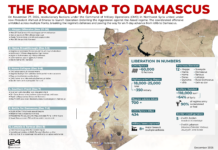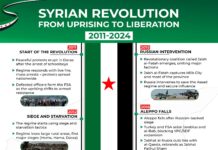
The deployment of the M142 High Mobility Artillery Rocket System (HIMARS) to Syria marks a significant step for the United States. The HIMARS, a mobile rocket launcher capable of launching multiple guided missiles and swiftly changing positions, has been strategically positioned to address potential threats and safeguard U.S. military interests.
In recent reports, the U.S. Central Command (CENTCOM) acknowledged the presence of undisclosed HIMARS launchers in Syria. These systems are believed to have been provided to the Kurdish-led Syrian Democratic Forces (SDF), which governs the northeast and eastern regions of the country—a region where the U.S. maintains a military presence of at least 900 troops. While the primary objective of the U.S. military in Syria is countering the Islamic State (IS) group, it is also prepared to protect its forces from attacks by other factions, including those backed by Iran.
The HIMARS deployment coincides with the redeployment of A-10 Thunderbolt II attack planes from the Persian Gulf to Europe and the Pacific. This shift likely influenced the decision to augment land-based firepower in northeast Syria, ensuring the defense of U.S. troops and facilitating rapid responses to potential aggressors. With intentions to establish a long-term garrison in the area, the U.S. requires force protection capabilities to effectively counter ranged threats—a role well-suited for the HIMARS system.
It is worth noting that the success of HIMARS in Ukraine against Russian forces has played a role in its deployment to Syria. The U.S. recognizes the possibility of artillery fire from ground-based Russian or Russian-backed Syrian forces as a potential threat. In light of the complex and unpredictable nature of the Syrian conflict, along with the presence of diverse armed groups supported by Iran, the U.S. maintains a deterrent stance and stands ready to respond decisively to any aggression against its forces in the region.
The recent HIMARS deployment underlines the United States’ commitment to bolstering force protection for its personnel in Syria, as well as its determination to swiftly address potential threats. By leveraging this advanced artillery system, the U.S. aims to deter attacks from various groups, including those with Russian and Iranian affiliations, while reinforcing its long-term presence in northeast Syria. As events unfold, the HIMARS deployment serves as a tangible demonstration of the U.S. military’s capabilities and unwavering commitment to the safety of its forces while carrying out its mission to combat the Islamic State group in the region.








